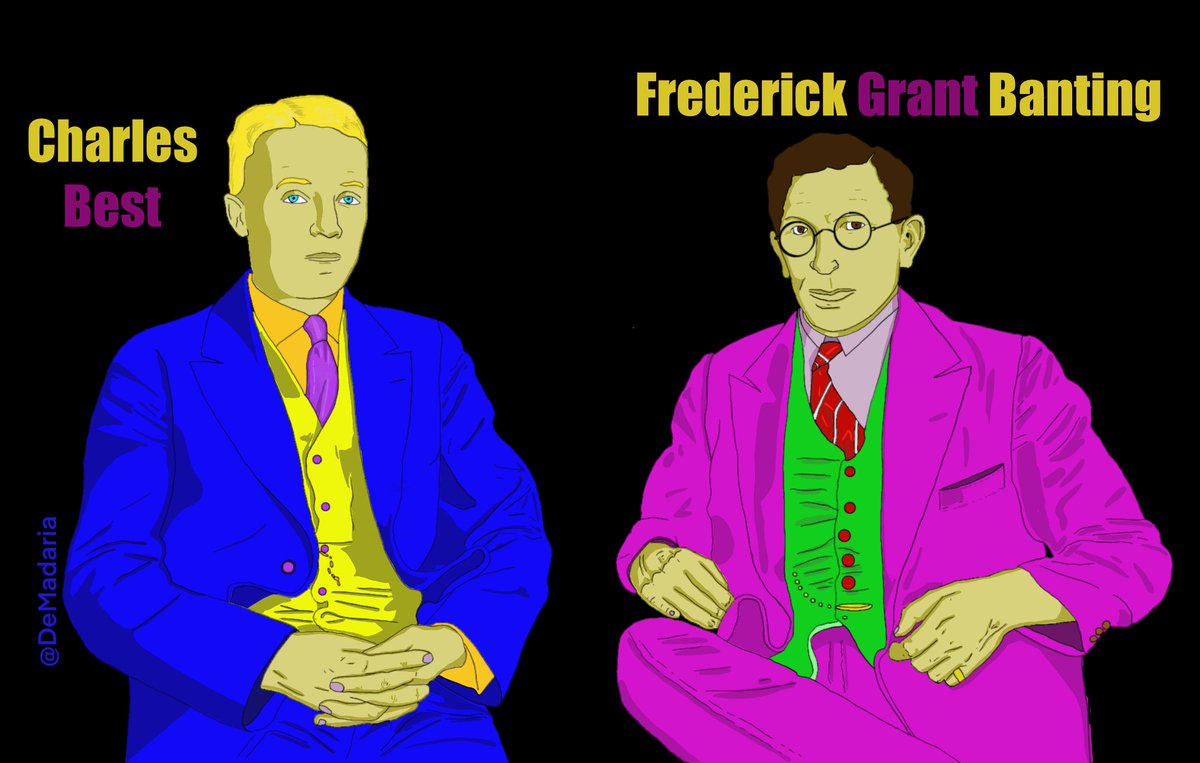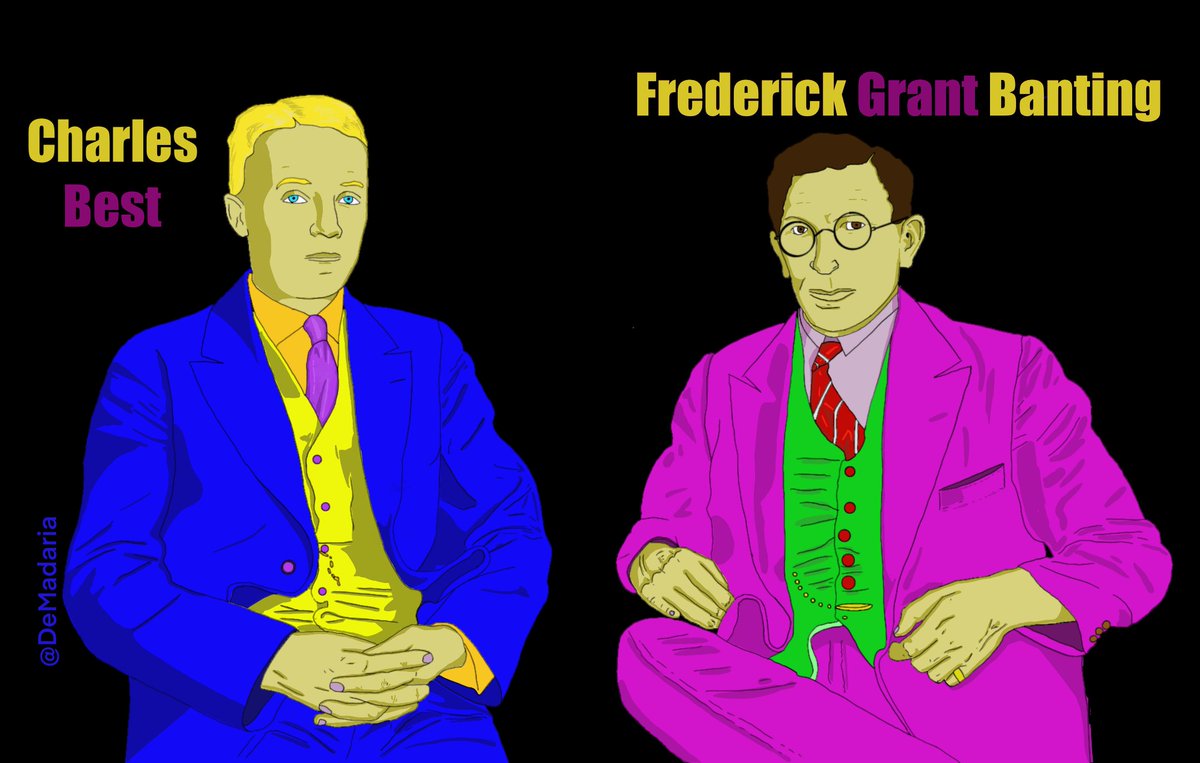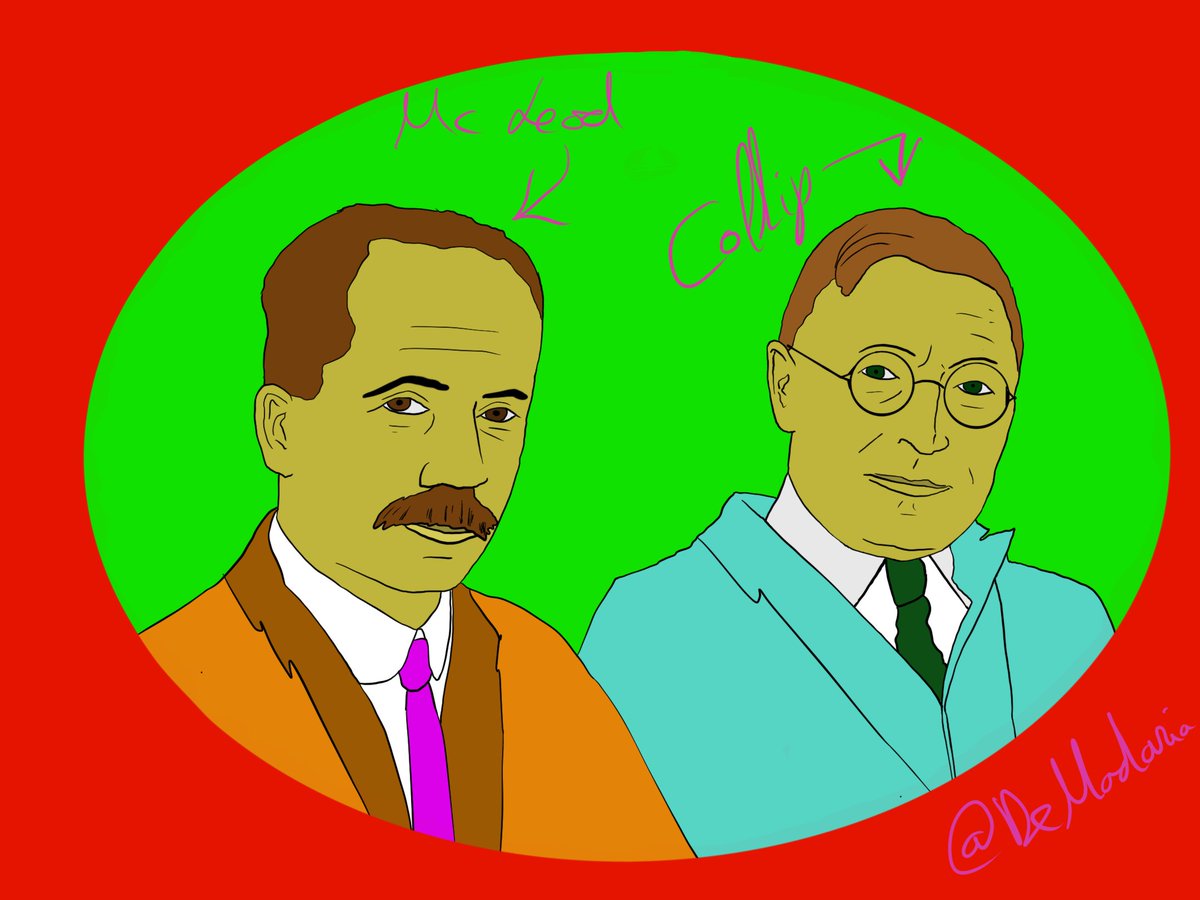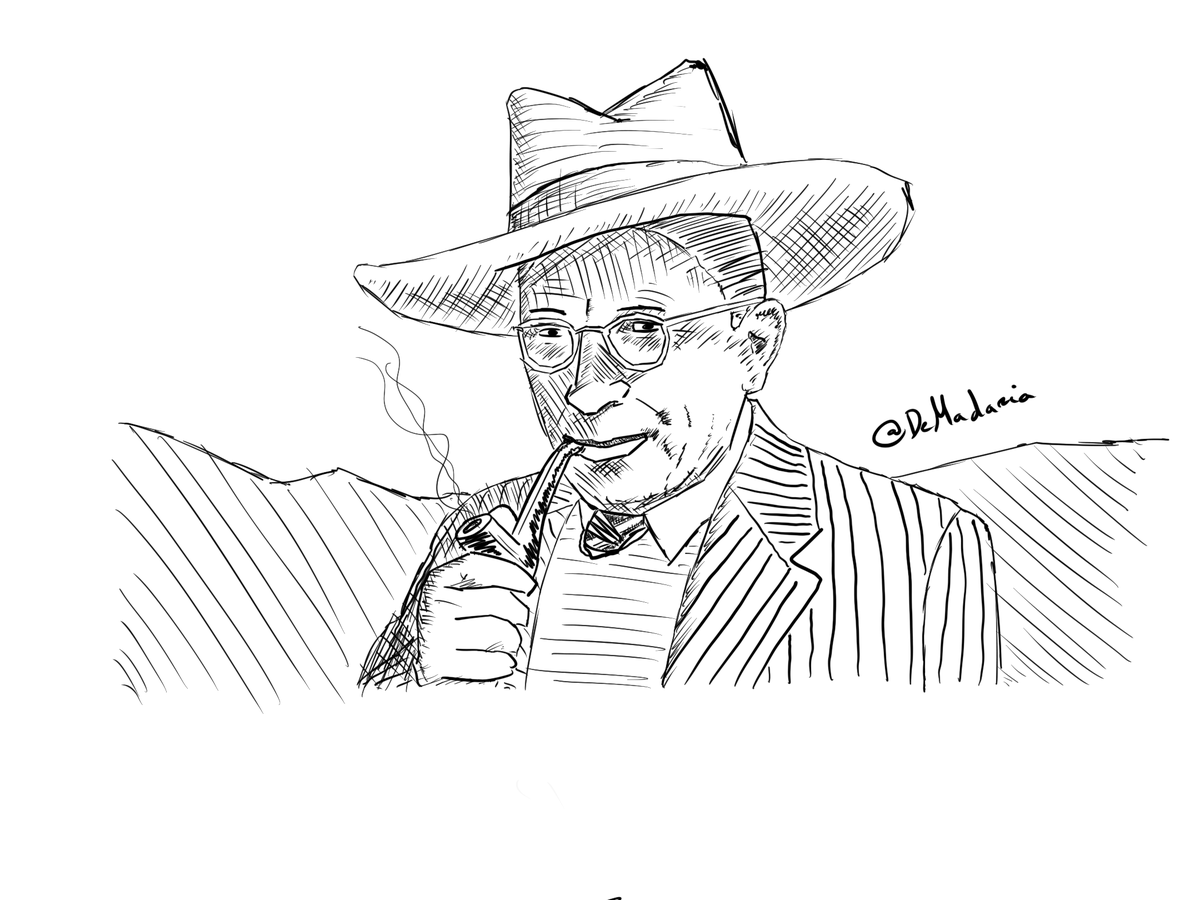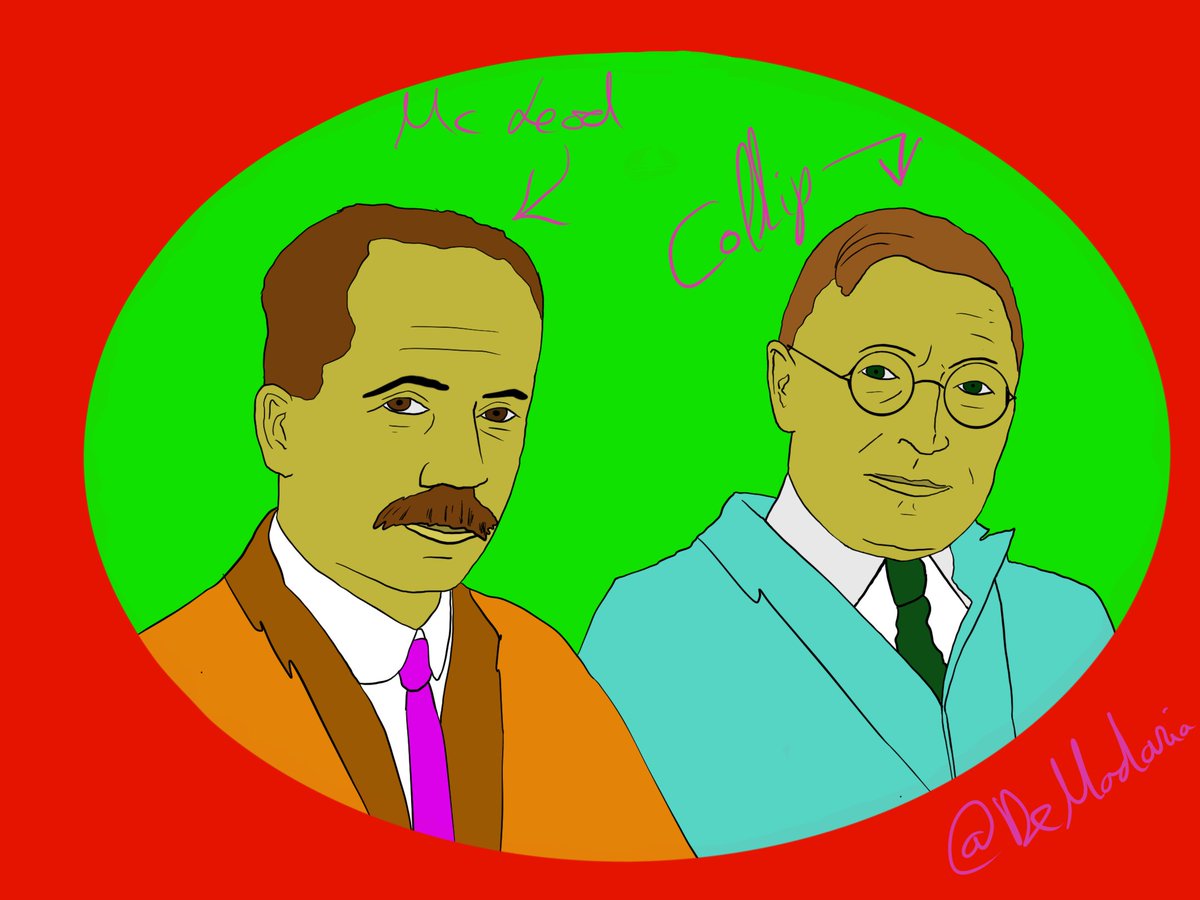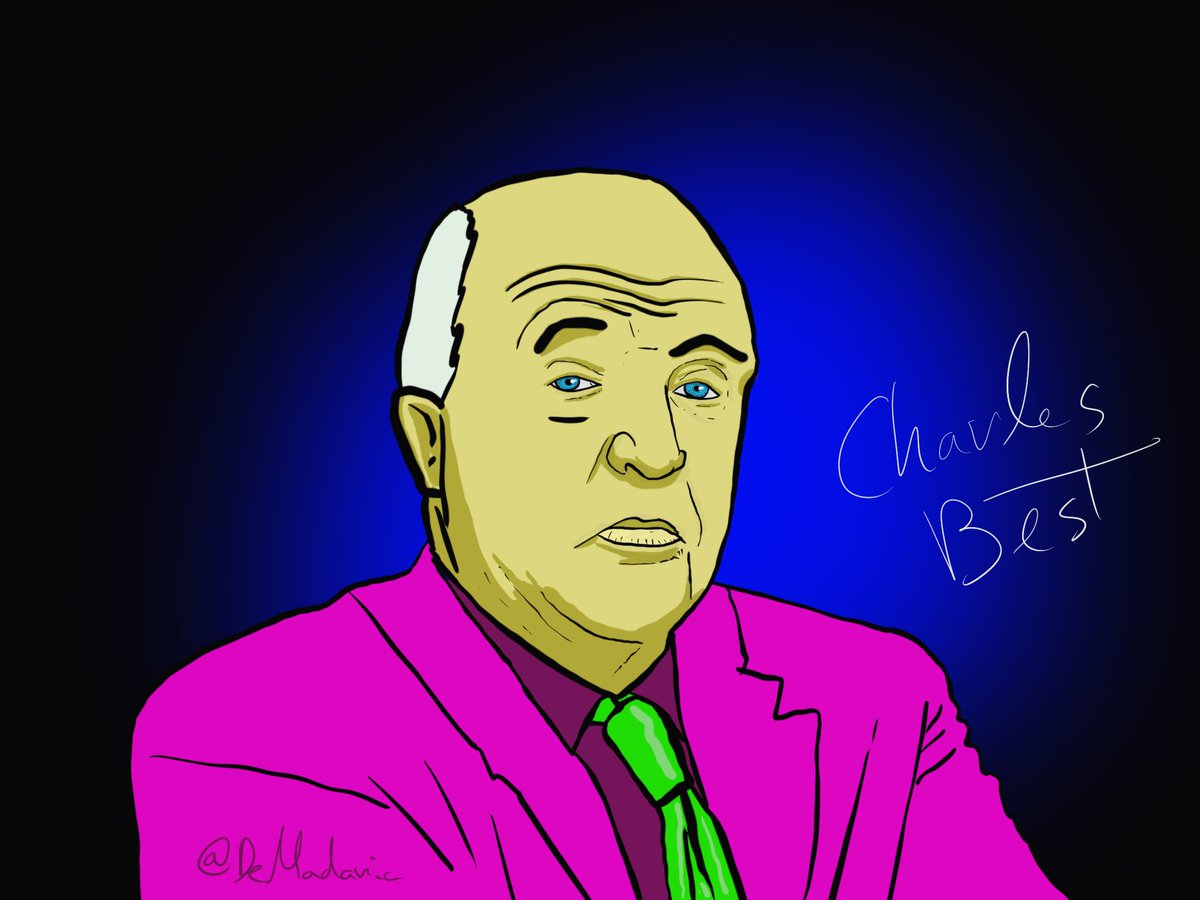Let´s talk about #PancreasHistory! The discovery of Insulin, Banting, Best, McLeod & Collip, the first patient who received insulin for #Diabetes Mellitus #UEGambassador @my_ueg @ESEndrocrinology @YouppiePancreas @EurPancClub @ChahalPrabhleen @PerelmansPearls #gigang
For ancient physicians the most important feature of diabetes was the increased urine output. Diabetes was a term for polyuria derived from the classical Greek word "diabainein" meaning to walk with the legs apart, later diabetes "a passer through" or a "siphon".
The Greek physician Arateus (credited for the term Diabetes) described it as "the melting down of flesh and limbs into urine"
Two forms were described by Thomas Willis in 1679, diabetes mellitus (melli=honey in greek), with a delicate sweet taste of urine, and insipida, with no such flavor. For Thomas Willis this disease was the "Pissing Evil"
In former diabetes and insulin research the investigators used frequently dogs as animal models (fortunately our current view of experimentation with our best friends is different!)
In 1889 von Meering and Minkowski (University of Strasbourg) reported that dogs without pancreas had increased blood sugar levels, developed coma and died, resembling diabetes in humans https://www.ncbi.nlm.nih.gov/pmc/articles/PMC4707300/">https://www.ncbi.nlm.nih.gov/pmc/artic...
Then a worldwide scientific race began to identify the substance of the pancreas in charge of regulating blood sugar.
Nicolae Constantin Paulescu, a Romanian physician, and physiology professor in Bucharest. He developed in 1916 a watery pancreatic extract "pancreine" which tended to normalize blood sugar levels of diabetic dogs and patented it
https://en.wikipedia.org/wiki/Nicolae_Paulescu">https://en.wikipedia.org/wiki/Nico...
https://en.wikipedia.org/wiki/Nicolae_Paulescu">https://en.wikipedia.org/wiki/Nico...
The extract was quite toxic, rectal administration did not worked well. He reported that an EV administration of his extract in a diabetic patient resulted in a dramatic fall of glucose levels to 0 (the survival or not of the patient remains a mystery) https://en.wikipedia.org/wiki/Nicolae_Paulescu">https://en.wikipedia.org/wiki/Nico...
Israel S. Kleiner and George L. Zuelzer also tested pancreatic extracts in dogs on 1915 and 1906. Those 3 researchers did not get the Nobel prize for insulin discovery later on, as their work was not as robust and was not useful for human diabetes.
Fred Banting (Alliston, Canada) was a war hero; being a military surgeon, he was wounded, and despite that, he helped other wounded soldiers, so he was awarded with the Military Cross (just a snack before the Nobel prize just 4 years later!)
When he returned home he did a surgery fellowship but did not get a place in his hospital in Toronto and his private practice was not going well. Then he read this article on the pancreas and diabetes and fascinated him ( #PancreasLovers): https://search.library.utoronto.ca/details?910347 ">https://search.library.utoronto.ca/details...
The real challenge was to separate the insulin from all the exocrine stuff. He had an idea: if you ligate the pancreatic duct, the exocrine pancreas will become atrophic making it easier to deal with the endocrine stuff.
Without a research training, but armed with willingness, he somehow convinced JJ McLeod, a Professor of physiology in Toronto to help him in this endeavor.
McLeod was not very convinced with the skills of Banting (and later, after the discovery of insulin, they hated each other) but he granted him access to a lab
McLeod also provided a 22 years old medical student assistant, Charles Best (born in USA, his parents were Canadians). A coin, a simple coin, decided between Best and another available student, Noble.
They were able to purify the endocrine secretions from the exocrine mess and injected it to a diabetic dog, with a subsequent decrease in blood glucose levels. Banting suggested to extract insulin from the fetal calf pancreas, afterwards they extracted it from cows
Experimentation with humans was permitted in January 1922. The first one was Leonard, a 14-year-old boy with diabetic ketoacidosis. It was a failure, the ketoacidosis did not improved and an Leonard developed an abscess and an allergic reaction https://www.frontiersin.org/articles/10.3389/fendo.2018.00613/full">https://www.frontiersin.org/articles/...
McLeod suggested to include James B. Collip, a biochemist in the team to help them to extract a more purified insulin and in a more reproducible way. He develop a new protocol and extracted insulin from oxes and porks
Then Leonard received a second and successful injection of insulin.He lived 13 years more taking insulin!That´s many years more than a teenager with diabetic ketoacidosis would have live. A pneumonia killed the first human to receive successfully a pancreatic extract of insulin
Banting and McLeod received the Nobel prize in 1923. Banting claimed that Banting should have been recognized too, and shared half of the money with him (the Nobel prize involves a huge amount of money). McLeod did the same with Collip.
The patent of insulin was sold by these guys to the University of Toronto for 1 dollar, after some struggles and doubts
Banting died in 1941 in an airplane accident while traveling to London to the demonstration of a revolutionary flying suit he helped design that would stop pilots from passing out while completing high-speed maneuvers (the subject of his research then) https://www.hiddennewfoundland.ca/sir-frederick-banting-plane-crash">https://www.hiddennewfoundland.ca/sir-frede...
Best lived till 1978. During World War II he was influential in establishing a Canadian program for securing and using dried human blood serum https://en.wikipedia.org/wiki/Charles_Best_(medical_scientist)">https://en.wikipedia.org/wiki/Char...
I would like to highlight 2 fortuitous events in this history, to read a paper that makes you change your whole life, and the life of others (Banting) and a coin deciding somebody to enter history (Best).
I hope you enjoyed it! It took me 2 weeks to develop this #tweetorial
I hope you enjoyed it! It took me 2 weeks to develop this #tweetorial

 Read on Twitter
Read on Twitter